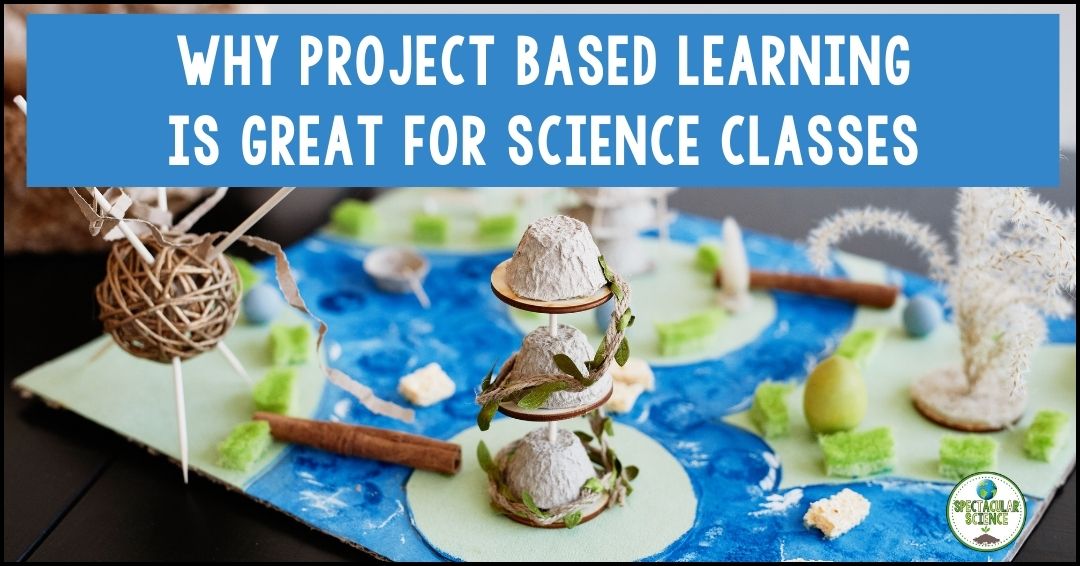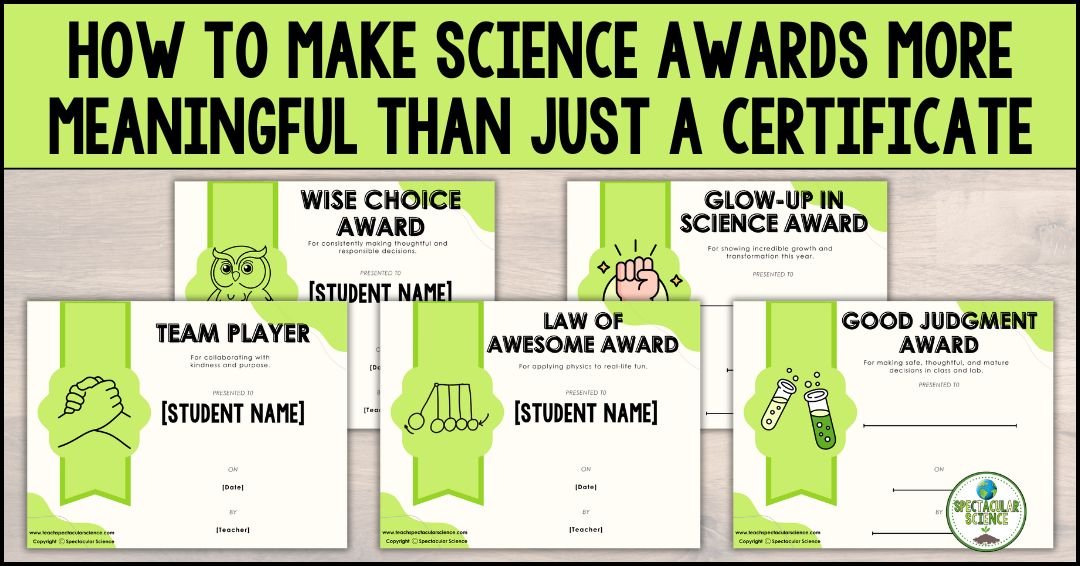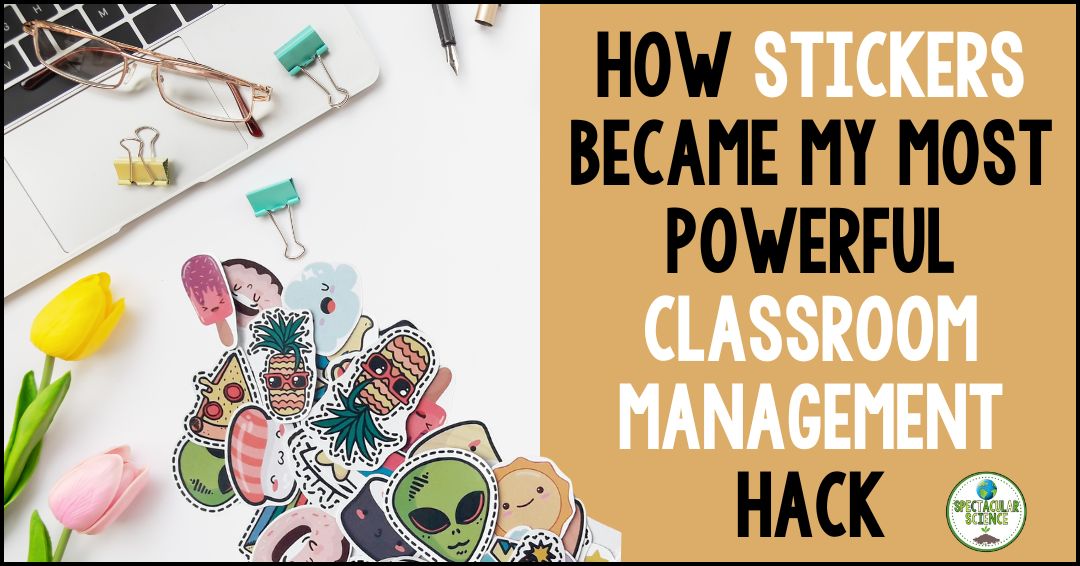
Do you like puzzles? If so, I’ve got a teacher tool that’s like a puzzle in that you fit pieces together, and upon completion, you can marvel at your work with a great sense of accomplishment. Spoiler alert: It’s a pacing guide for your science class!
Using a pacing guide in your science class is like building a puzzle. The pacing guide is similar to the puzzle box image showing you the intended finished product. It clearly outlines how the different pieces of your curriculum can fit together. And if we keep going with this metaphor, in creating the guide you assemble a whole bunch of pieces, including those beloved corner pieces (aka the cornerstones of your curriculum).
Keep reading to learn about the benefits of pacing guides and steps to success for creating your own!
Understanding the Purpose of a Pacing Guide
A pacing guide is a detailed schedule or outline of timelines for specific units, lessons, and concepts throughout a course.
This timeline will ensure comprehensive coverage of the curriculum you have to deliver. It provides a welcome structure for teachers and students.
As a teacher, imagine knowing what you’ll be teaching from day to day or not having to worry part-way through the year that you can (or can’t) cover everything you need to before the end of the year!
Stress relief is probably the biggest benefit of a pacing guide!
There are other benefits too!
You can maintain instructional consistency since there’s a clear plan. As the teacher you will know from day to day and month to month what you’ll be covering in class. This allows you to really scaffold lessons and skills within your curriculum because you can see the vision of the whole year.
You can facilitate differentiation and personalized instruction because you can tweak the guide when and how you need to depending on the students in your classes. A pacing guide is a guide; meaning it can be adjusted as needed.
Let’s go back to that puzzle metaphor here for a moment. There is always a time when you’re assembling a puzzle that frustration looms large. In that moment you can do one of three things:
- Give up. (We know as teachers that this really isn’t an option so skip ahead to choices 2 and 3!)
- Step away to adjust your mindset. For teaching this means reflecting on how to re-deliver a lesson or to approach the guide/unit/lesson with fresh eyes. (Check out this post about how to know when you need to re-teach something.)
- Shift to another section of the puzzle. For teaching this means moving away from the initial plan whether that’s potentially going back or skipping ahead in the curriculum.
This is all to say that a pacing guide is a strategy and a tool that teachers can use to their best advantage but they don’t need to be beholden to the document at all times. Adjust when and as needed!
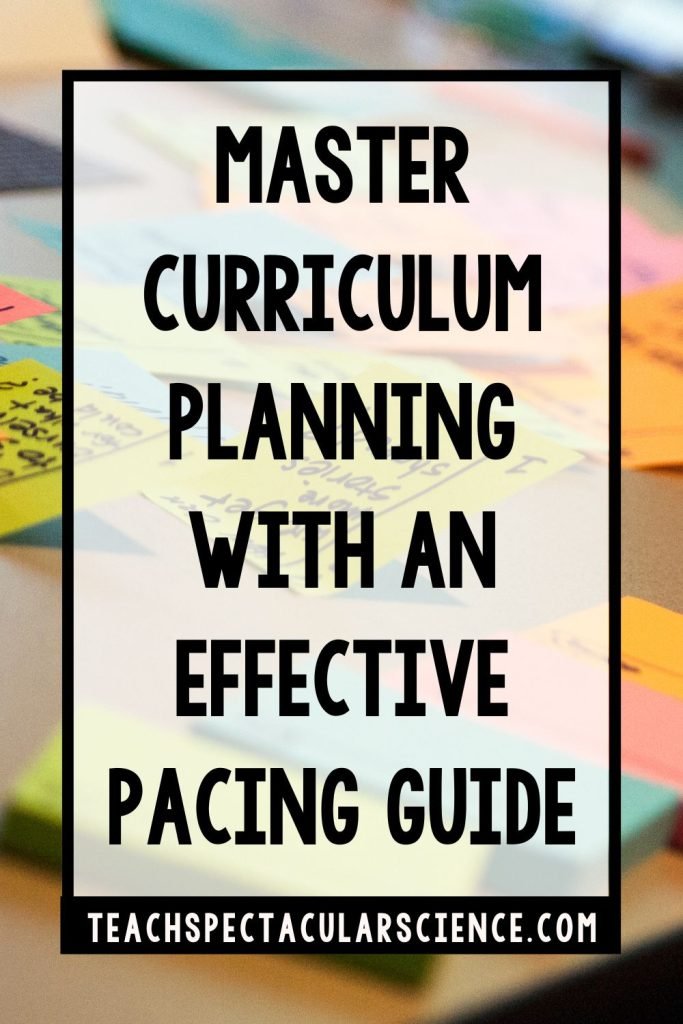
Tailoring Your Pacing Guide: 6 Steps for Success
- Conduct a thorough analysis of curriculum standards and requirements
- Identify essential learning objectives and prioritize content
- Integrate formative and summative assessments to gauge student progress
- Allocate time for review, remediation, and enrichment activities
- Utilize available resources effectively, including textbooks, technology, and supplemental materials
- Incorporate flexibility into the pacing guide to accommodate unexpected events or student needs
Reflections: Assessing Timing, Resources, and Needs
A key aspect of a pacing guide is that it is meant to be a ‘living’ document that can be flexible and adaptable.
For example, this Earth Science Pacing Guide for the full year is a strategic tool to optimize teaching plans and promote efficient planning and curriculum coverage. Teachers can adapt this tool to suit their needs and most importantly the needs of their students.
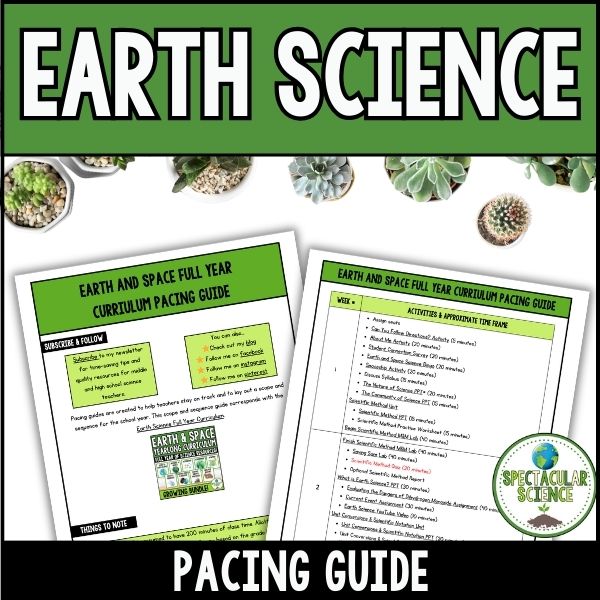
After completing your first-ever pacing guide or in anticipation of creating one after having already taught a course without one, reflection is necessary.
Take time to review the year of teaching and think about:
- Successes – What worked well in terms of timing and/or specific lessons or units?
- Areas for improvement – What could have been better? What lessons need revision because they fell flat or just weren’t as successful as expected?
- Gaps in curriculum coverage and areas where adjustments are needed – What was missing? Where did students struggle and why might they have struggled?

For Environmental Science, check out this pacing guide that’s been meticulously designed to help teachers maintain focus and structure throughout the academic year. With this guide, you’re able to skip the time-consuming work of creating your pacing guide and just jump to the reflection component in a year’s time! This is yet another way to save your time and reduce your stress!










